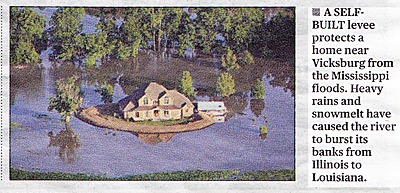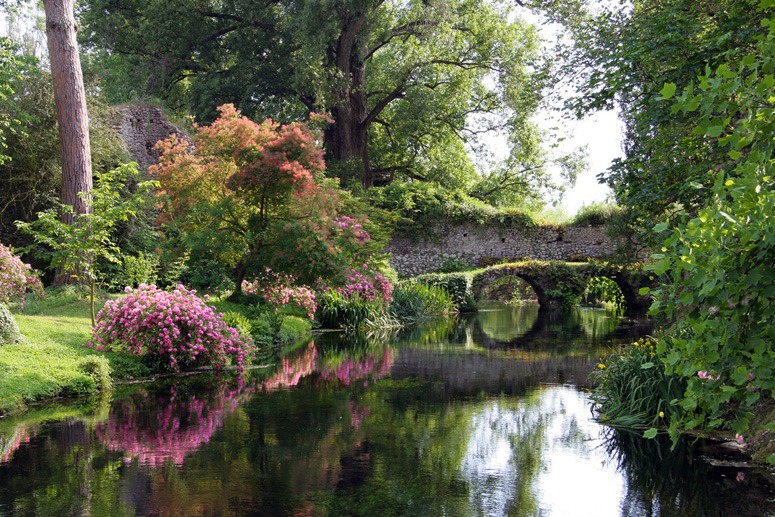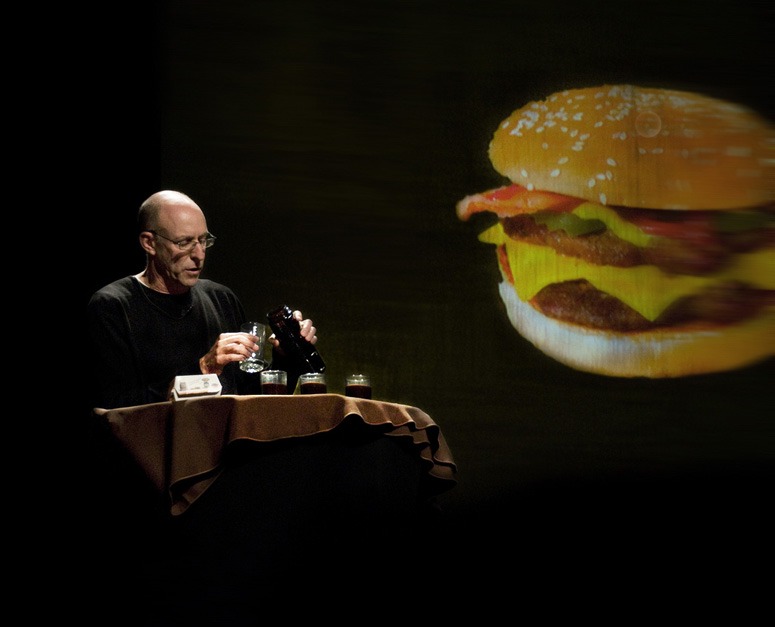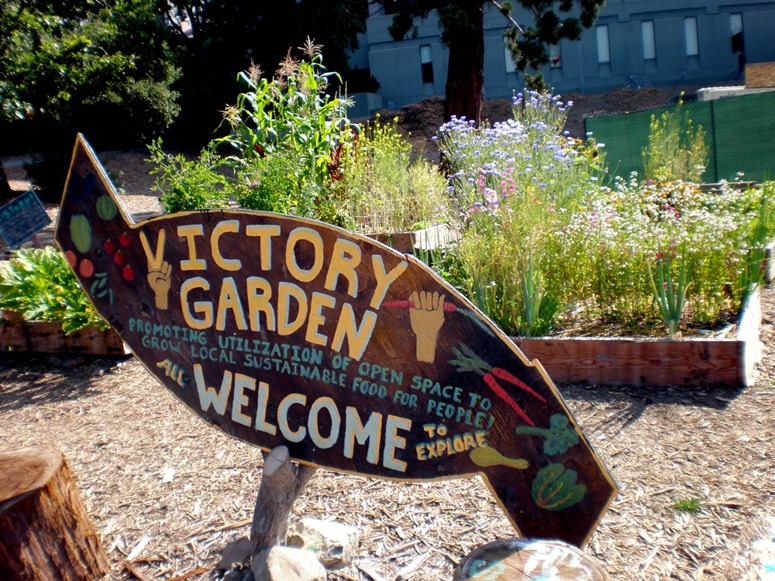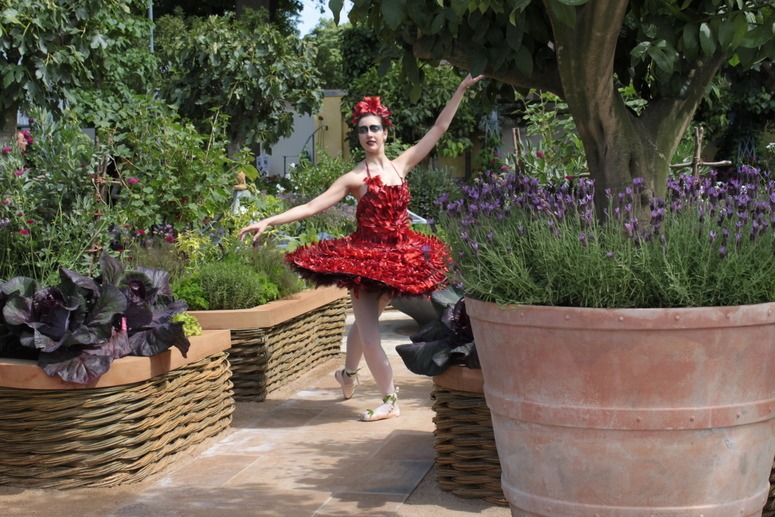
Sustainable and theatrical themes at Chelsea help argue the case for an Unofficial Chelsea Fringe Garden Festival
Amongst other things, garden design an arena for fashion. This tempts the critic to look for trends and what I noticed was more an extension of previous trends than anything completely new:
- the visual language of sustainability is becoming stronger, with green walls and green roofs tending towards the norm
- there is more use of food plants each year, as in the above photograph (of a design by Bunny Guiness)
- the interest in green roofs is trending towards high-rise gardens: Sarah Eberle designed an accessible roof garden; B&Q designed a multi-storey garden; Dairmud Gavin hung a garden from a crane [see 2011 Chelsea review]
- the financial trend is to more-and-more money being spent on the show gardens each year
The financial trend reminds me of a previous suggestion: the Official Chelsea Flower Show should be supplemented with an unofficial fringe event. We therefore renew the proposal, made in 2005, for a Chelsea Fringe Flower and Garden Show. The advantages of a Chelsea Fringe would include:
- there could be sustainably Permanent Show Gardens, as well as Temporary Show Gardens. People often remark on what a waste of money it is that Chelsea Show Gardens are only on view for a single week. The Chelsea Fringe would allow some of the show gardens to become permanent.
- many summer visitors to London, who cannot get tickets for the Official Chelsea Flower Show, would be able to see wonderful gardens. The gardens could be opened in sync with the official show and would then be at their best for the whole summer.
- the Chelsea Fringe would re-inforce London’s position as the World Capital of Gardening
- the Chelsea Fringe Show Gardens could be combined with theatrical and other events, as in the above photograph
- there could be Floating Chelsea Gardens on the Battersea Reach of the River Thames
Here are the 2007 proposals for the type of events which could be brought within the umberalla of a Chelsea Fringe Flower and Garden Show Events.


